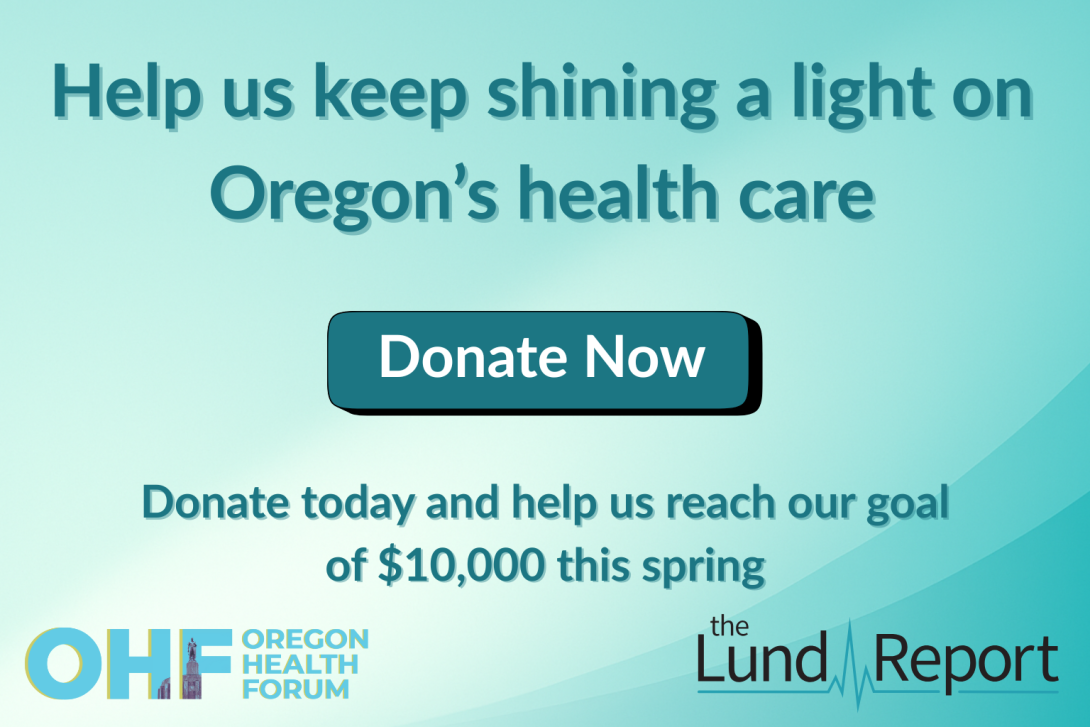Using cash incentives, the state is nudging coordinated care organizations into doing a better job on key health measures such as getting sealants on children's teeth and reducing the use of hospital emergency rooms for mental health crises.
At the same time, some coordinated care organizations appear to be backsliding in some other areas the state has stressed, including how well patients are controlling their diabetes and follow-up care after a patient is hospitalized for mental illness, the Oregon Health Authority said in a report released Tuesday.
The state’s final “metrics” report for 2018 on coordinated care organizations documents how well the 15 Medicaid insurers carried out health authority’s emphasis on 17 key areas of health care, from adolescent well-care visits to weight assessment and counseling for children.
The care organizations are health insurers that oversee health care spending on roughly 1 million Oregonians under the Oregon Health Plan, the state’s Medicaid program.
Depending on how well each care organization does in the “metrics” areas, the state may award the agency extra money. For 2018, the state awarded nearly $188 million in this bonus money or about 4.25 percent of the $4.5 billion the state sent to care organizations in 2018.
“There is a significant amount (of money) at risk for CCOs if they don’t meet those (care) targets,” said Jeremy Vandehey, director of the Oregon Health Authority’s Health Policy and Analytics Division.
Vandehey said the improvements in such financially incentivized areas as health assessments for children in foster care, application of dental sealants, screening for depression and emergency department use by patients with mental illness, show the financial incentive program is working.
“Oregon has lagged behind other states in the field of the number of kids who received dental sealants,” Vandehey said. Since the state first began handing out bonuses to care organizations to encourage them to have dental sealants applied, the percent of children on Medicaid receiving them has risen from 18.5 percent in 2015, to 24.8 percent in 2018, the state said.
The concept is to reward care organizations for reaching particular goals, not just for spending state and federal money on health care services, Vandehey said.
At the same time, Vandehey said the state must watch out that care organizations don’t “backtrack” on other priority care areas.
The state said it was monitoring a number of key measures where care organizations may be slacking off: follow-up after hospitalization for mental illness; diabetes management; reproductive health; timeliness of prenatal care; and initiation of treatment for alcohol or drug abuse.
For 2018, the state report said 12 of the 15 coordinated care organizations earned their full “quality pool” dollars.
The top-performing care organization was PrimaryHealth, a for-profit CCO serving about 10,000 members in Jackson and Josephine counties in Southern Oregon. Ironically, the state earlier this summer rejected PrimaryHealth’s application to continue as a CCO effective the beginning of next year. The state deemed PrimaryHealth’s application deficient because failed to show it could remain solvent for the length of the contract.
Other care organizations in Jackson/Josephine can pick up PrimaryHealth’s members, the state said.
PrimaryHealth has appealed.
For 2018, PrimaryHealth was the star in the state’s “incentive metric performance,” according to the new report. The care organization was the top performer in six of the 17 measurement areas, including “access to care,” improving diabetes control, and reducing emergency department utilization, the state said.
State officials and broad-based panels of volunteer members chose the measurement areas in an effort to try to steadily improve care for Medicaid members. The state shifts and finetunes the measurement areas to try to zero in on particular health care problems.
With CCO 2.0, a big revamp of the coordinated care organization system beginning in 2020, the state is changing how it rewards care organizations that meet performance goals, Vandehey noted. Rather than offering organizations rewards for performing well in measurement areas, the state will withhold part of the promised funding for each coordinated care organization, and will release the money only if the organization meets the goals, Vandehey said.
The state is also asking care organizations to begin sharing some of its performance bonus money with health care providers, Vandehey said.
Currently, there are no restrictions on how a care organization uses the bonus money. It can spend it operating costs, salt it away in reserves, or, if it is a for-profit, hand it out to shareholders.
The amount of bonus money the state pays out each year varies. For 2019, the amount will be about 3.5 percent of the total sent to coordinated care organizations, said Allyson Hagen, an Oregon Health Authority spokesperson.
Vandehey said the performance bonus money is only a small part of the funding the state funnels to coordinated care organizations. But the bonus money still influences how coordinated care organizations and health care providers serve patients, he said.
The health agency has a number of staff members working on setting up the performance metrics, collecting and validating data, providing technical help to coordinated care organizations and analyzing performance.
“Some are full time and many others work on metrics as a small portion of their job,” Hagen said. “We estimate that eight staff work a total of four full-time-equivalents on the CCO Metrics Program.”
You can reach Christian Wihtol at [email protected].

Exactly how are cco's reducing the use of hospital emergency rooms for mental health crises? Could use some in-depth reporting on how this is being accomplished. Past experience has been refusing treatment and kicking back out onto the street, that is how it is being accomplished. Or calling police to remove and jail.